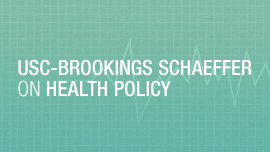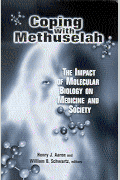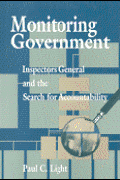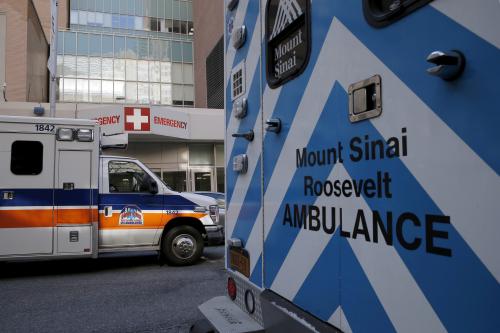What’s the latest in health policy research? The Essential Scan, produced by the USC-Brookings Schaeffer Initiative for Health Policy, aims to help keep you informed on the latest research and what it means for policymakers. If you’d like to receive the biweekly Essential Scan by email, you can sign up here.
Price-based Copayment Tiers Reduce Generic Drug Prices
The introduction of a tiered copayments policy into the German public health insurance system decreased prices for generic drugs by 5 percent while increasing the price of brand-name drugs by 4 percent. The policy introduced price limits that exempts drugs from copayments when the price of a drug falls below the copayment exemption level. The authors, Annika Herr and Moritz Suppliet, suggest the increase in the price of brand-name drugs is a result of a decision to target more price-insensitive customers. They suggest that assigning co-payment tier based on drug price-as opposed to drug type-can be an effective way of incentivizing substitution towards lower priced drugs and increasing competition among drug companies. Full article here.
Effects of Behavioral Interventions Rapidly Diminish in Post-Intervention Period

Low-cost interventions that “nudge” physicians to reduce unnecessary prescriptions for antibiotics have been shown in previous studies to significantly reduce inappropriate prescribing. A follow-up study found the effects of these behavioral interventions diminished in the 12 months after the interventions were ended. The authors did find some of the interventions seemed to have more staying power than others: for instance, the intervention that compared a clinician’s inappropriate prescribing rate to peers still performed better than the control group in the post intervention period. Authors Jeffrey Linder, Daniella Meeker, Jason Doctor, and colleagues concluded that behavioral interventions designed to influence clinical decision making are most effective when applied long term. Full study here.
ACA Marketplace Design Helps Maximize Benefit Uptake
Low-income consumers are highly sensitive to cost-sharing reductions (CSRs) and Advanced Premium Tax Credits (APTCs) when selecting a plan from an ACA Marketplace. Furthermore, Thomas DeLeire, Andre Chappel, and coauthors find that only 1.5 percent of consumers forgo their cost sharing subsidies by purchasing suboptimal plans. This high level of uptake among consumers shows that the Affordable Care Act Marketplaces are constructed in a way that helps many people understand the benefits they are receiving and make better health insurance decisions, no matter their level of income or health insurance literacy. Full article here.
A Hospital-Wide Readmissions Measure Would Modestly Increase Number of Eligible Hospitals but Substantially Increase Penalties for Safety-Net Hospitals
While there is currently little difference in readmission rates between safety-net and other hospitals, transitioning the Hospital Readmission Reduction Program (HRRP) to a hospital-wide readmission measure (from the currently used condition-specific measure) would substantially increase the disparity in penalties for safety-nets compared to others (increasing the mean penalty by 0.41 percentage points). Furthermore, Rachel B. Zuckerman, Karen E. Joynt Maddox and colleagues found such a measure would only modestly increase the number of hospitals eligible for penalties by 76 to 128 (2.3 to 4 percent), based on whether one-year or three-years of admissions was used. The authors note these findings offer evidence for adjusting the penalty formula if a hospital-wide measure were adopted to ensure harmful effects on safety-net hospitals are not incurred. Full article here.
The Brookings Institution is committed to quality, independence, and impact.
We are supported by a diverse array of funders. In line with our values and policies, each Brookings publication represents the sole views of its author(s).












Commentary
The essential scan: Top findings in health policy research
October 23, 2017